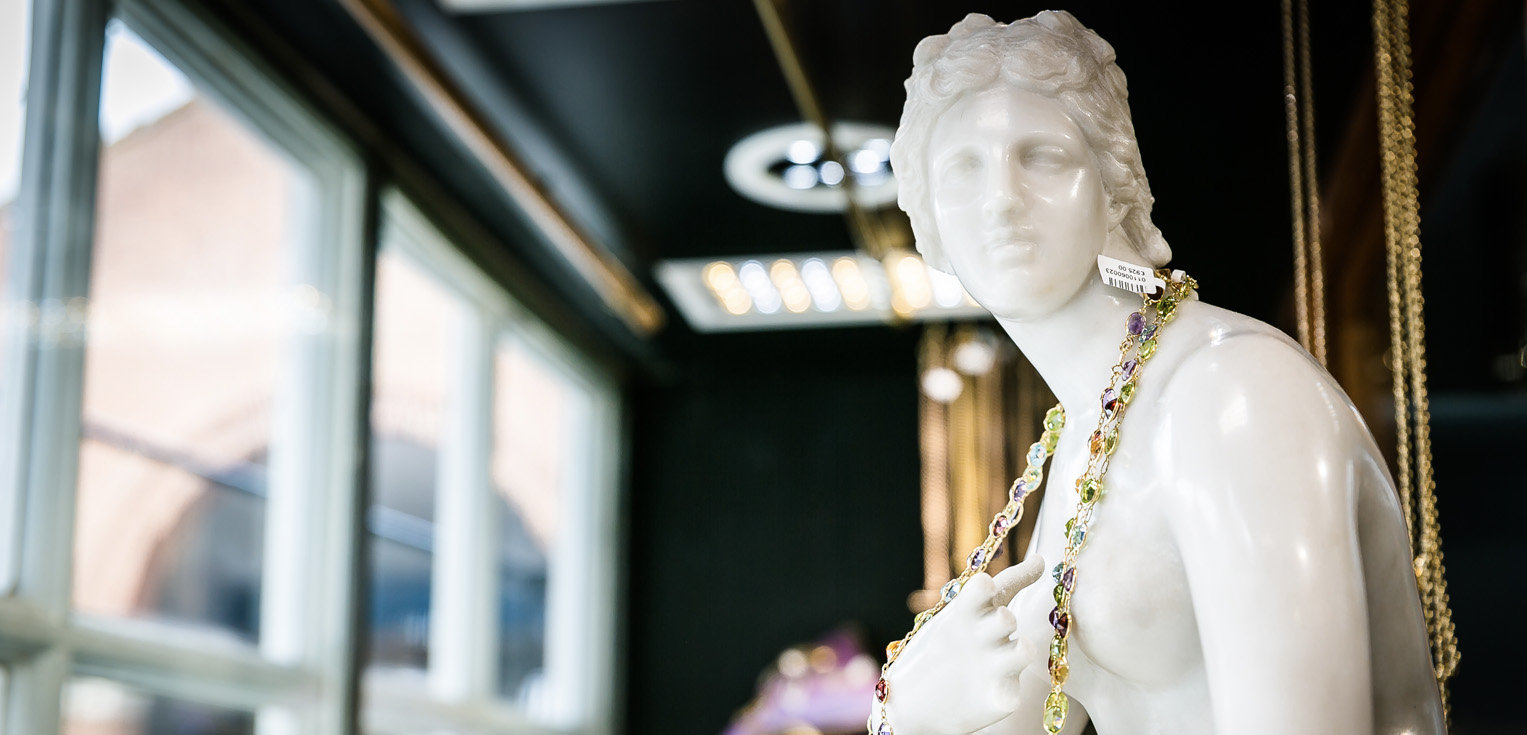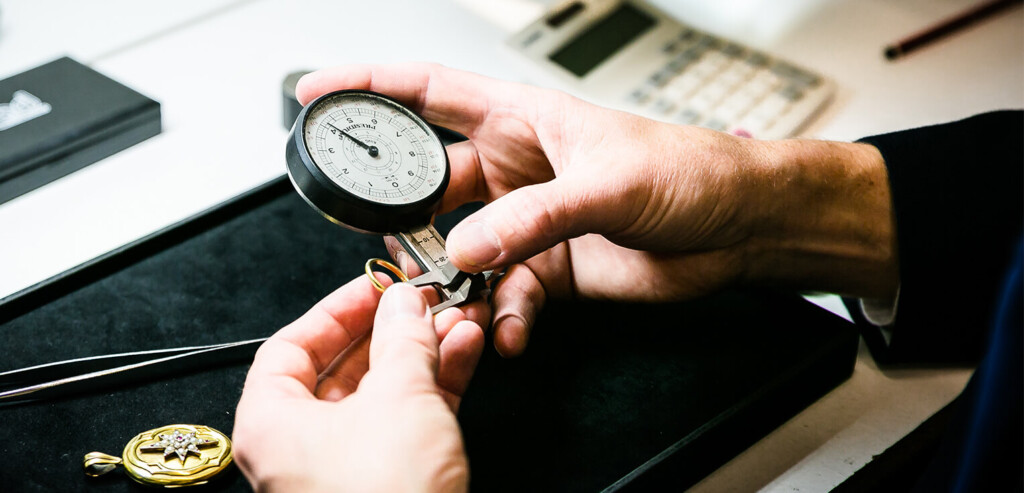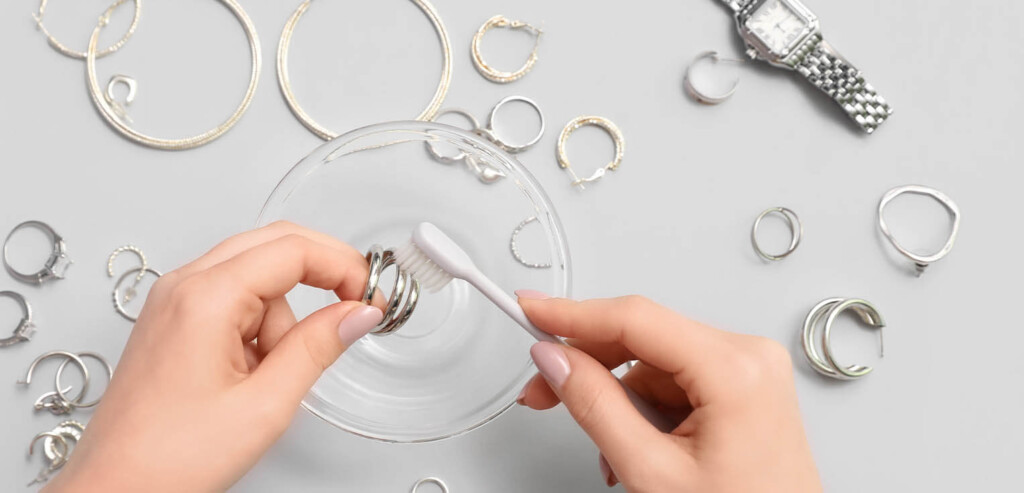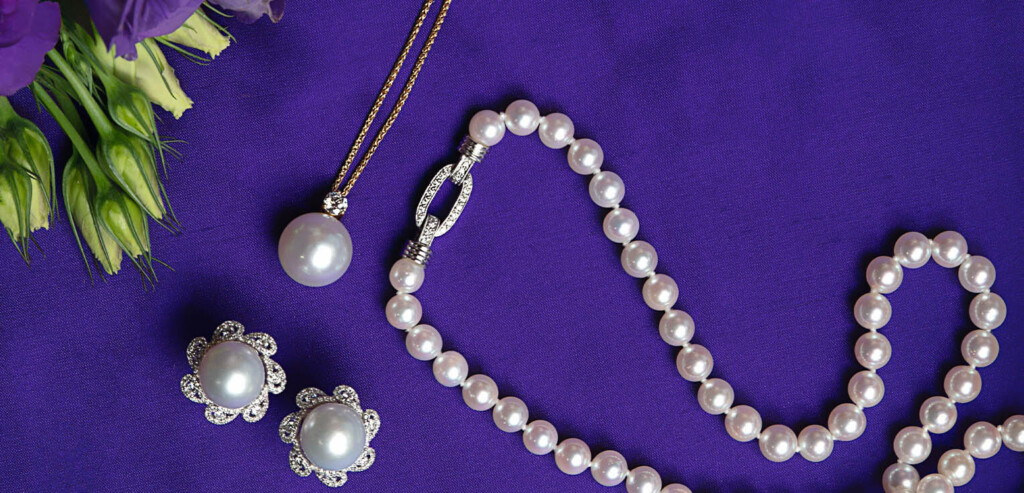As we enter November, we’re looking at the birthstones for this month; citrine and topaz. Yellow is the colour most associated with these gems as the November birthstones, but in fact topaz can be found in a whole myriad of other colours to complement any outfit or skin tone. Read on to find out more about the history and background of these beautiful stones, their meanings, their alleged healing properties, and why you should consider adding them to your existing jewellery collection.
What’s the difference between these two November birthstones?
The original birthstone for November was topaz, but in 1912 American jewellers decided to standardise the birthstones, by introducing alternative options which were easier to manufacture and sell in large quantities. Citrine was introduced as a lower-cost option as it was more widely available. Traditionally the topaz associated with November birthstones would have had a yellow hue, similar to citrine, and was referred to as “precious topaz”. However, it is now more commonly found with an artificial blue colour added through irradiation of the lower-value colourless gems.
The International Gem Society explains the differences between the two gems, “Because of topaz’s long association with the colour yellow, citrines are sometimes misidentified as topazes. However, citrine is a quartz, a distinct gem species. Topaz has different physical and optical properties than citrine, most notably greater hardness and brilliance.”
Popular jewellery options
One of the wonderful things about topaz is that it comes in such a wide variety of shades, so you can always find a piece of jewellery in a colour to suit your outfit or your skin tone. Whilst the yellow/orange hues are traditional for this November birthstone, evoking gorgeous warm autumnal vibes to match the season, other colours are still a great option for birthday or even Christmas gifts.
Another popular and meaningful choice is to factor your beloved’s birthstone into their engagement ring. These stones can be set alongside diamonds or other stones for an elegant and personalised extra touch. Due to the hardness and durability of topaz, as well as the range of colours available, it’s an excellent choice for daily wear. The natural structure of these stones also gives them a great sparkle!
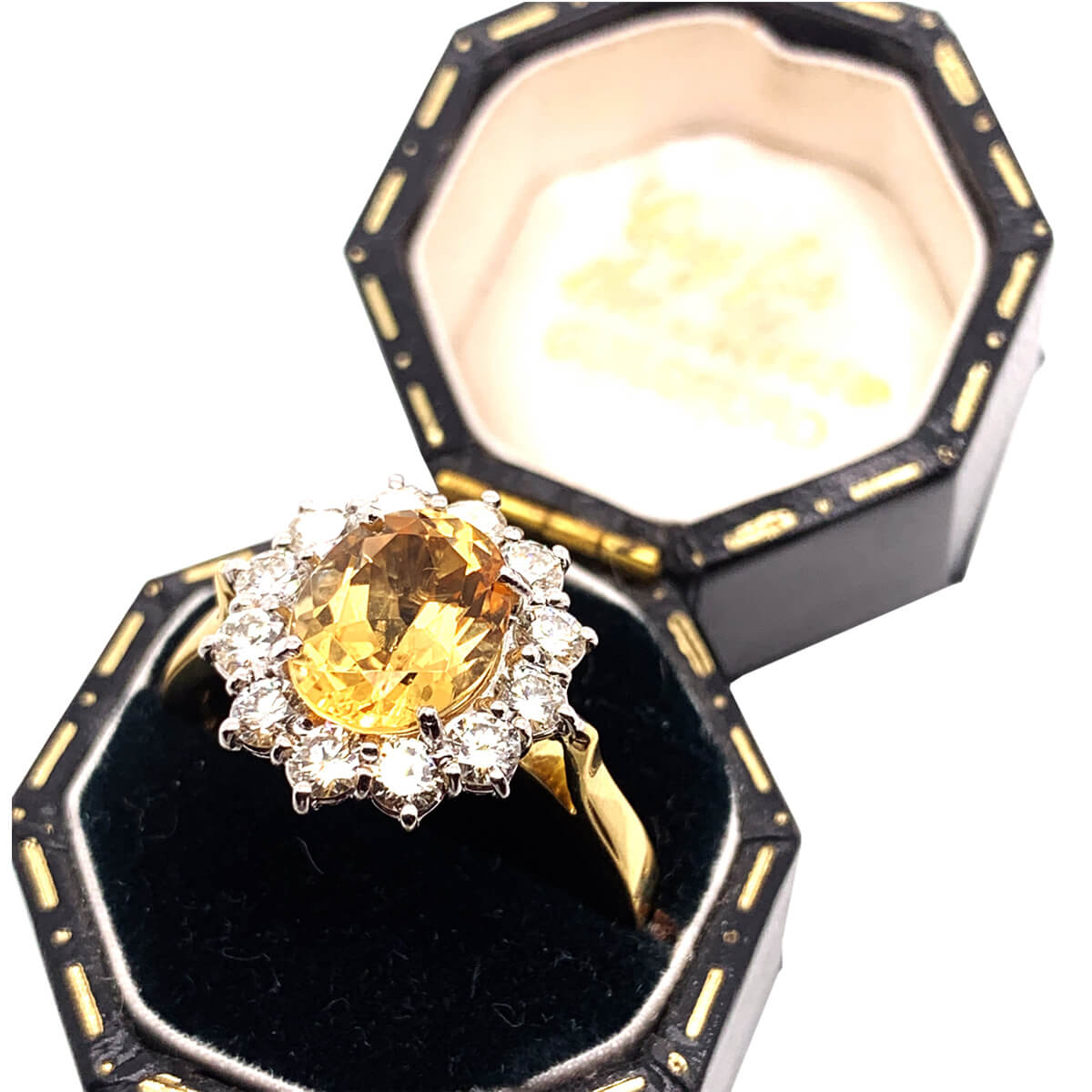 |
| Golden Topaz & Diamond Cluster Ring |
| £2,875 |
 |
History and benefits of topaz
The original 12 birthstones have their roots in the Bible and other ancient texts. It’s believed they were worn on the breastplate of Aaron, the elder brother of Moses and High Priest of the Israelites, which was used to communicate with God. Each of the stones on the breastplate was later adopted for one of the 12 months of the year.
The word ‘topaz’ originally referred to any yellow/orange stone, so there is some confusion around its history, since actual topaz can be found in a range of different colours. The first ‘modern’ topaz was found in Germany in 1737, but the different colours can still often be mis-identified.
Topaz has generally most often been mined from areas of Brazil and Russia, however more recently deposits have been found in locations across the world. Since the early 1970s, a particular kind of pink/violet topaz has been mined only in north-western Pakistan.
Traditionally, topaz has been associated with true love, success, good health, and joy, so would be a perfect addition to any piece of jewellery being gifted to a loved one. In India, topaz worn above the heart is said to bring long life, beauty, and intelligence.
Topaz is one of the hardest gemstones available, ranking an eight on the Moh’s scale, just behind diamonds and corundum. This means it’s one of the most durable options out there, being highly resistant to scratches, so you can feel peace of mind when wearing it on a daily basis.
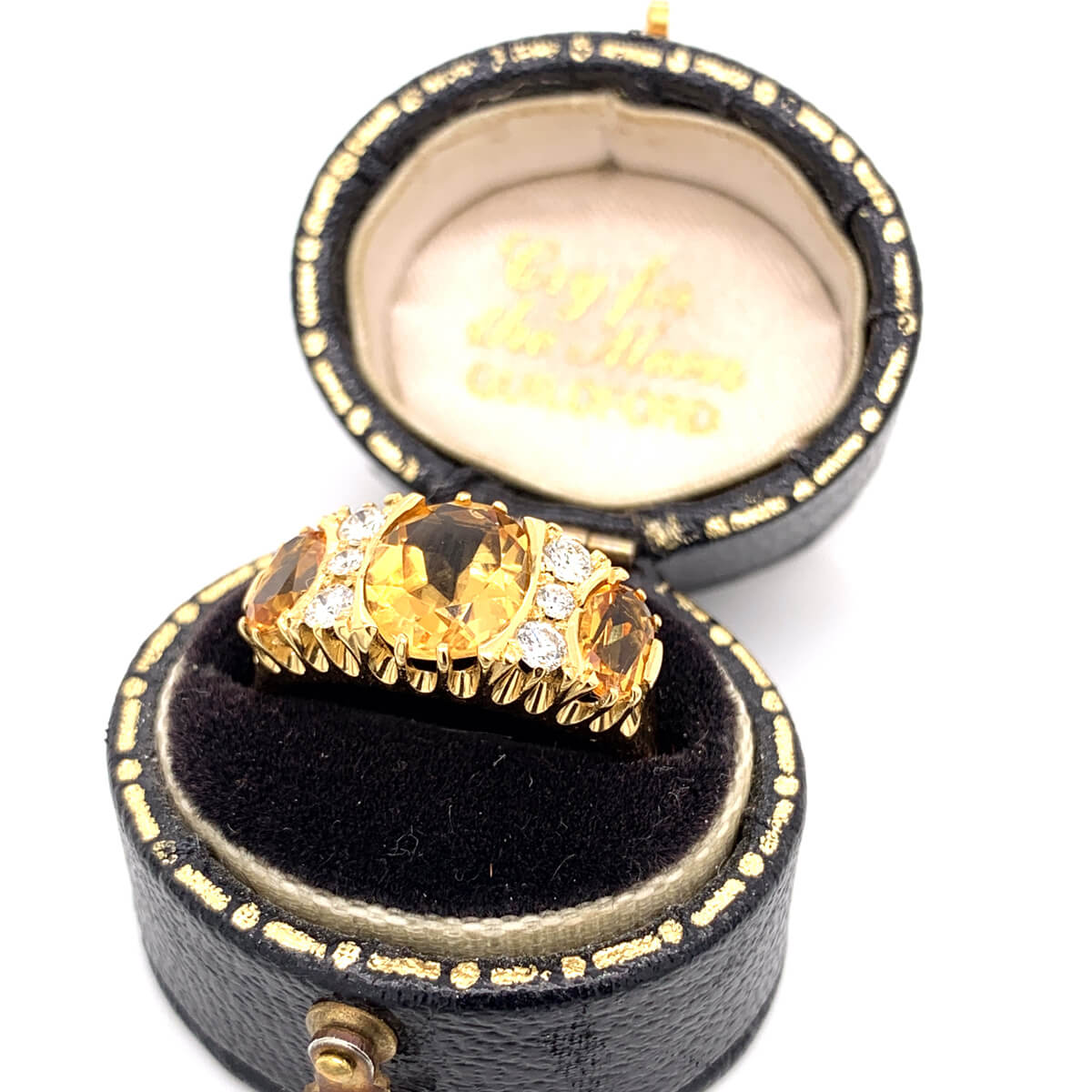 |
| Oval Citrine & Diamond Victorian Style Trilogy Ring |
| £1,485 |
 |
History and benefits of citrine
Citrine is a great low-cost alternative to topaz, as it is a form of quartz, probably the most widely available mineral on the planet. Naturally occurring citrine is rare, but amethyst and smoky quartz are often gently heat-treated to produce the warm golden hues, and this is what makes up most of the cheaper citrine you would find on the market.
As a member of the quartz family, citrine boasts a number of healing properties, so is recommended for anyone feeling either physically or emotionally tense. It’s said to promote better self esteem and increase energy, and in ancient times was used to improve circulation, purify the body of toxins, and strengthen the immune system.
Citrine has also been said to increase creativity, so it’s a popular option for artists and other creative professionals. If you’re feeling in a creative slump, perhaps adding some citrine jewellery to your outfit might give you just the boost you need.
Choosing the right colour
Whilst citrine only comes in yellow/orange hues, topaz affords a wealth of colourful options. Blue topaz is a popular low-cost choice, as they are artificially coloured through an irradiation process which closely mimics what would happen to create that colour in the earth.
The yellow/gold hues of traditional precious topaz and citrine are a beautiful addition to an autumnal wardrobe, and would generally complement warmer skin tones. Paired with a gold ring or chain, they offer a comforting and subtle antique air. Natural citrine is rare these days, so is more commonly found in vintage pieces, where the striking yellow colour makes a bold statement.
Final thoughts
At Cry For The Moon, we stock a variety of beautiful pieces, with new items being added all the time. If you’re interested in adding a piece of topaz or citrine jewellery to your collection, or buying an engagement ring or a gift for a loved one, please pop in to our store, browse our selection online, or contact us for more information about what we have available.

